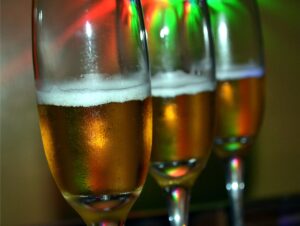By Henrylito D. Tacio
Stroke remains one of the leading causes of disability and death in the Philippines.
In fact, according to the latest data (published in 2020) from World Health Organization (WHO), stroke deaths in the Philippines reached 74,167 or 11% of total deaths. The age adjusted death rate is 104.08 per 100,000 of population and ranks Philippines No. 66 in the world.
According to studies, there is high mortality and morbidity of stroke in the Philippines, especially in areas outside the major cities where access to quality stroke care is limited. The geographical barrier to access further aggravates the gaps in the building blocks of the healthcare system.
Every October 29 of each year, since 2006, the global community observes World Stroke Day. This year’s theme is “The power of saving #precioustime.” The theme builds on the momentum of last year’s “Minutes Can Save Lives” campaign.
Most strokes reportedly happen in the morning. “During the early morning, when blood pressure is higher, the risk for stroke appears to increase,” wrote Steven Reinberg for Consumer Health Day News.
Strokes, however, can occur any time of the day – even when you are sleeping. “It’s possible to wake up with stroke symptoms as a result of a stroke that happened while you were asleep,” wrote wellhealth.com’s Sarah Bence.
You may have a stroke if you experience the following, according to the US Centers for Disease Control and Prevention (CDC): “Sudden numbness or weakness in the face, arm, or leg, especially on one side of the body. Sudden confusion, trouble speaking, or difficulty understanding speech. Sudden trouble seeing in one or both eyes. Sudden trouble walking, dizziness, loss of balance, or lack of coordination.”
Actually, there are two types of strokes: ischemic and hemorrhagic. An ischemic stroke occurs when blood clots or other particles block the blood vessels to the brain. A hemorrhagic stroke happens when an artery in the brain leaks blood or ruptures.
Hypertension is the most common risk factor for stroke among Filipinos. Most Filipinos are at high risk of hypertension due to high rates of smoking, low levels of high-density lipoprotein cholesterol, physical inactivity, and high body mass index, among others.
Age, however, is the highest risk for stroke. “The older you are, the more likely you are to have a stroke,” the US Centers for Disease Control and Prevention (CDC) says. “The chance of having a stroke doubles every 10 years after age 55.”
Although stroke is common among older adults, many people younger than 65 years also have strokes.
Stress can also cause a stroke. “Stress can cause the heart to work harder, increase blood pressure, and increase sugar and fat levels in the blood. These things, in turn, can increase the risk of clots forming and traveling to the heart or brain, causing a heart attack or stroke,” says heartandstroke.ca.
A stroke is a common yet serious medical event that requires significant recovery and it can impact life expectancy. “After a stroke, many people have physical problems such as numbness in the arms or legs and trouble with walking, vision, swallowing, talking or understanding,” webMD.com says. “These issues may be permanent, but not always. Rehabilitation is key for regaining lost skills and adapting to damage that can’t be undone.
Health experts, however, assure that many stroke patients continue to live a fulfilling life long after rehabilitation. Among those who survived the stroke include American country singers Loretta Lynn and Randy Travis, actresses Sharon Stone and Marla Gibbs, and actors Tim Curry and Frankie Muniz.
So much has been written about people living with stroke, but only very few talked about dying after stroke. Yet, studies have shown that most people with a severe stroke will die within six months.
Charles Dickens in the man behind such novels as Oliver Twist, Great Expectations, and A Tale of Two Cities. On June 8, 1870, at the age of 58, he suffered a stroke. He died the following day.
The following famous personalities also died from fatal strokes: Hollywood actors Luke Perry, Cary Grant and Bill Paxton; former US presidents Franklin Roosevelt, Richard Nixon, and Gerald Ford; film director John Singleton; ex-British prime minister Winston Churchill, and ex-Russian dictator Josef Stalin.
The Philippine Health Insurance Corporation, the country’s national health insurance system, reimburses only P28,000 and P38,000 for ischemic and hemorrhagic stroke, respectively, both of which cover professional and healthcare institution fees. – ###








